Underground comix
Underground comics (or comix) are small press or self-published comic books that began to appear in the US in the late 1960s. The comix community was centered in San Francisco, but also included important artists and publishers in New York, Chicago and Austin, Texas. Prominent artists associated with this movement include Vaughn Bode, Robert Crumb, Kim Deitch, Jim Franklin, David Geiser, Justin Green, Roberta Gregory, Rick Griffin, Bill Griffith, Rory Hayes,Greg Irons, Jack Jackson, Jay Kinney, Denis Kitchen, Jay Lynch, Victor Moscoso, Dan O’Neill, Ted Richards, Trina Robbins, Spain Rodriguez, Gilbert Shelton, Art Spiegelman, Foolbert Sturgeon, Robert Williams, Skip Williamson and S. Clay Wilson.
A short history of America – Robert Crumb |
History and themes
 Underground comix reflect the concerns of the 1960s counterculture: experimentation in all things, drug-altered states of mind, rejection of sexual taboos, and ridicule of the establishment. The spelling ‘comix’ was established to differentiate these publications from mainstream ‘comics’. The notion of comic books outside the mainstream was suggested by Harvey Kurtzman when he used the headline “Comics Go Underground” on the newspaper-format cover of Mad issue 16 (October, 1954). The term ‘underground comics’ was created by writer-editor Bhob Stewart during a panel discussion at the July 23, 1966, New York comics convention. On a panel with Ted White and Archie Goodwin, Stewart predicted the birth of a new type of comic book: “I want to say that just as mainstream movies prompted underground films, I think the same thing is going to happen with comics. You will have underground comics just as you have had underground films. This would be more like James Joyce in comic book form. You can see the beginning of this in some of the cartoon panels that have been appearing in the East Village Other.”
Underground comix reflect the concerns of the 1960s counterculture: experimentation in all things, drug-altered states of mind, rejection of sexual taboos, and ridicule of the establishment. The spelling ‘comix’ was established to differentiate these publications from mainstream ‘comics’. The notion of comic books outside the mainstream was suggested by Harvey Kurtzman when he used the headline “Comics Go Underground” on the newspaper-format cover of Mad issue 16 (October, 1954). The term ‘underground comics’ was created by writer-editor Bhob Stewart during a panel discussion at the July 23, 1966, New York comics convention. On a panel with Ted White and Archie Goodwin, Stewart predicted the birth of a new type of comic book: “I want to say that just as mainstream movies prompted underground films, I think the same thing is going to happen with comics. You will have underground comics just as you have had underground films. This would be more like James Joyce in comic book form. You can see the beginning of this in some of the cartoon panels that have been appearing in the East Village Other.”
 Mainstream comics are typically produced by a team (including a writer, a penciler, an inker, a letterer, and an editor), while underground books were often done by a single person. As it can take very long for a single artist to produce a full-length work, many underground artists contributed shorter works to anthology comic titles. A well-known example is the comic Funny Aminals (1972), edited by Terry Zwigoff with short pieces by Crumb, Griffith, Lynch, Spiegelman and Shary Flenniken.
Mainstream comics are typically produced by a team (including a writer, a penciler, an inker, a letterer, and an editor), while underground books were often done by a single person. As it can take very long for a single artist to produce a full-length work, many underground artists contributed shorter works to anthology comic titles. A well-known example is the comic Funny Aminals (1972), edited by Terry Zwigoff with short pieces by Crumb, Griffith, Lynch, Spiegelman and Shary Flenniken.
Underground comix were largely distributed though a network of head shops which also sold underground newspapers, psychedelic posters, and drug paraphernalia. In the mid-1970s, sales of drug paraphernalia was outlawed in many places, and the distribution network for these comics (and the underground newspapers) dried up. Although many of the underground artists continued to produce work, the underground comix movement is considered by most historians to have ended by 1980, to be replaced by a rise in independent, non-Comics Code compliant publishing companies in the 1980s and the resulting increase in acceptance of adult-oriented comic books (see alternative comics).
The most popular underground comics have been reprinted many times and can be obtained relatively easily. Many other comix were produced in a single, small print run, and are now rare. Records of comix produced are less complete than those for mainstream comics. A 1982 book, The Official Underground and Newave Comix Price Guide by Jay Kennedy, is one of only a few relatively complete and authoritative reference works on comix. A small but growing number of university libraries have comics collections, in which underground comics often play a key role.
 The term “underground comics” is sometimes used more loosely to also include some contemporary alternative comics.
The term “underground comics” is sometimes used more loosely to also include some contemporary alternative comics.
Notable underground comics
- Air Pirates Funnies (Dan O’Neill, others. Sparked a famous copyright lawsuit from Disney)
- All Stars (Rick Griffin)
- American Splendor (Harvey Pekar: writer/ publisher, Robert Crumb, others: art)
- Anarchy Comics (political comic edited by Jay Kinney)
- Arcade (anthology edited by Bill Griffith and Art Spiegelman)
- Big Ass Comics (R. Crumb)
- Bijou Funnies (Chicago-based anthology, Jay Lynch and others)
- Binky Brown Meets the Holy Virgin Mary (Justin Green)
- Bogeyman (Rory Hayes and others)
- Captain Guts (Larry Welz)
- Cheech Wizard (Vaughn Bode)
- Color (Victor Moscoso)
- Comix Book – Marvel Comics attempt at mainstream underground comics
- Coochie Cootie’s Men’s Comics (Robert Williams)
- Corn Fed Comix (Kim Deitch)
- Cunt Comics (inspired by the Tijuana Bible 8-pagers)
- Dopin’ Dan (Ted Richards)
- El Perfecto (R. Crumb and others)
- Felch Cumics (inspired by the Tijuana Bible 8-pagers)
- Feds ‘n’ Heads (Gilbert Shelton)
- The Fabulous Furry Freak Brothers (Gilbert Shelton)
- Facts o’ Life Sex Education Funnies (benefit comic for a free clinic)
- Funny Aminals (includes first MAUS story by Art Spiegelman)
- Ghost Mother Comics (Mad Peck)
- God Nose (Jaxon) considered by many to be the first underground comic
- Gothic Blimp Works – anthology produced by the East Village Other newspaper
- Heavy Tragi-comics (Greg Irons)
- Hungry Chuck Biscuits (Daniel Clyne and others)
- Hydrogen Bomb and Biological Warfare Funnies (Gilbert Shelton and others)
- Insect Fear (Horror anthology edited by Spain)
- It Ain’t Me Babe (anthology edited by Trina Robbins)The first all-woman comic book
- Jiz Comics (inspired by the Tijuana Bible 8-pagers)
- Light (Greg Irons)
- Mad Peck Catalog of Good Stuff (Mad Peck)
- Man from Utopia (Rick Griffin)
- Mr. Natural (R. Crumb)
- The People’s Comics (R. Crumb)
- Projunior (Created by Don Dohler. Drawn by various)
- Radical America Komiks (Gilbert Shelton and others)
- Rip Off Review of Western Culture
- Short Order Comix (first issue has Art Spiegelman’s autobiographical “Prisoner on the Hell Planet”)
- Skull Comix (EC style horror comix edited by Greg Irons)
- Slow Death (ecological comic and EC style sci-fi comix)
- Snarf (humor anthology)
- Snappy Sammy Smoot (Skip Williamson)
- Snatch (inspired by the Tijuana Bible 8-pagers)
- Snoid (R. Crumb)
- Subvert Comix featuring Trashman – Agent of the Sixth International (Spain Rodriguez and others)
- Tales from the Tube (Rick Griffin and others)
- Tales of the Ozone
- Teenage Horizons of Shangrila
- Thrilling Murder
- Tuff Shit (Robert Williams and others – methadone clinic benefit comix)
- Turned-on Cuties (inspired by the Tijuana Bible 8-pagers)
- Wimmen’s Comix (anthology edited by the Wimmen’s Comix Collective)
- Witzend (edited by Wallace Wood and Bill Pearson)
- Young Lust (romance comic satire edited by Bill Griffith and Jay Kinney)
- XYZ Comics (R. Crumb)
- Zap Comix (Robert Crumb, Spain Rodriguez, S. Clay Wilson, Rick Griffin, Robert Williams, Victor Moscoso)
Publishers
See also
References
- Fogel, Dan. Fogel’s Underground Comix Price Guide Hippy Comix, 2006.
- Kennedy, Jay. The Underground and New Wave Comix Price Guide. Cambridge, Massachusetts: Boatner Norton Press, 1982.
Further reading
- Rosenkranz, Patrick. Rebel Visions: the Underground Comix Revolution,1963-1975 Fantagraphics Books, 2002. ISBN 1-56097-464-8
- Tucker, Brian. X-Tra: “The Legacy of Underground Comix,” review of Rebel Visions
- Skinn, Dez Comix: The Underground Revolution, (Collins & Brown, 2004)
- Sabin, Roger Comix, Comics and Graphic Novels, (Phaidon, 2001)
- Estren, Mark James A History of Underground Comics, (Straight Arrow Books/Simon and Schuster, 1974)
External links
- Mini-Komix
- Quarter Bin: Underground comics
- “A Visual Guide to Underground Comix Reprints” – A guide to distinguish reprints.
- Robert Crumb official site
- Comic Strip Search
- David Geiser Comics
- 1991 audio interview with Art Spiegelman by Don Swaim























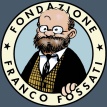

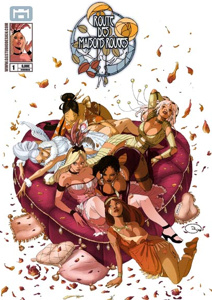



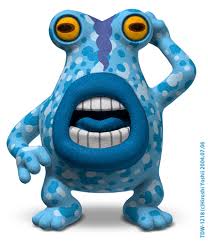
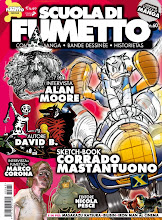











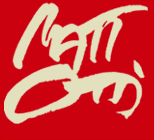

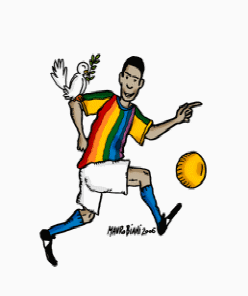



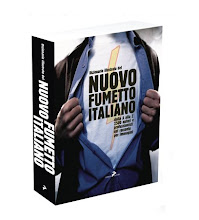















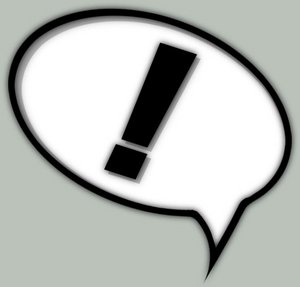


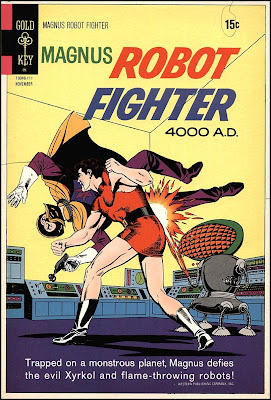















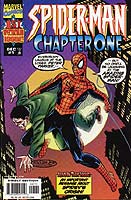













Trackbacks